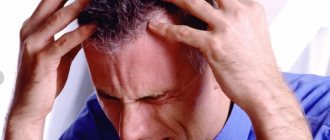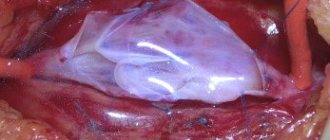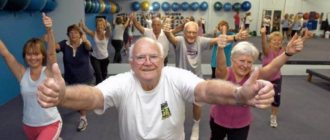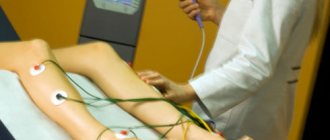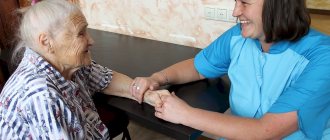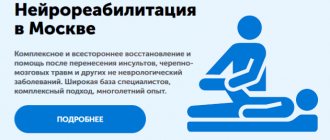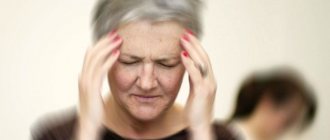Unfortunately, a disorder such as stroke is very common. And if previously older people suffered from damage to the blood vessels of the brain, today young people also turn to specialists for help. In our information article we talk about the consequences of the disease, in particular about strabismus and how to restore vision.
In this article
- What is a stroke?
- Types of lesions
- What are the causes of stroke?
- What are the symptoms of a stroke?
- What are the consequences of a stroke related to the visual organs? How to recover? What will be the treatment?
- How to treat strabismus during a stroke?
- What does drug treatment include?
- Gymnastic exercises for the treatment of strabismus
- Surgery to treat strabismus after stroke
- Recommendations
What is a stroke?
Experts call a stroke an acute disturbance of blood circulation in the brain, which entails focal damage. Unfortunately, every year the disease becomes younger and more common: people after thirty years of age often experience a stroke. It manifests itself as sudden weakness in the limbs and disturbance of consciousness, as well as facial asymmetry, impaired speech and vision, and other signs that we will discuss below. It is important to diagnose this disease in time and begin treatment. Will the body be able to fully recover? It is difficult to answer this question unambiguously, since it will depend on physiology and age, as well as a number of other factors. In any case, treatment is necessary to correct cardiac, respiratory and metabolic disorders and combat cerebral edema. Also, a person after a stroke needs specific pathogenetic, neuroprotective and symptomatic therapy that will prevent complications.
Types of lesions
Experts distinguish two types of stroke - ischemic and hemorrhagic. They are radically different from each other, as they have different mechanisms of action and principles of treatment. So, the first type can be called a cerebral infarction in another way. What happens at this moment? The work and patency of the cerebral arteries is disrupted, which leads to prolonged ischemia and changes in brain tissue in the area of the blood supply to the affected artery.
In turn, a hemorrhagic stroke is provoked by a pathological (atraumatic) rupture of a cerebral vessel with hemorrhage into the cerebral tissue. Neurologists summarize that ischemic stroke most often affects people after fifty years of age, while hemorrhagic stroke can also occur in the younger generation. For example, at the age of 40 years.
Damage to the optic lobes of the brain
A stroke is characterized by certain symptoms, and a simple analysis of the clinical picture allows doctors to identify areas of the brain damaged by ischemia and hemorrhage. If there is a sudden onset of headache, nausea, weakness and blurred vision on one side, you should immediately contact a medical facility. A stroke provokes a sharp deterioration of the condition. This can happen in hours or even minutes, so help must be provided as quickly as possible.
Symptoms of a stroke:
- sudden headache, dizziness, nausea and vomiting;
- disorientation in space;
- disorder of consciousness (short-term or long-term);
- sometimes coma, loss of vision;
- muscle weakness on one side, paresis or paralysis.
An accurate diagnosis, identification of the affected lobes of the brain and analysis of the extent of the process can only be made after an examination. However, the doctor must be able to recognize a stroke and symptoms of damage to a particular part of the brain, as this helps to navigate and provide first aid correctly. Loss of vision, headache, unsteady gait and numbness of the limbs on one side are sure signs of a stroke that has affected the visual centers of the brain.
It is believed that brain strokes are more common in men over 45 and 60 years of age. The condition can cause irreparable harm to the body, but experts say that a third of patients after a stroke have the opportunity to restore vision and other impaired functions.
Extensive cerebral embolism in the vast majority of cases causes damage to the visual centers and permanent impairment, while mild ischemia rarely causes long-term harm. Therefore, with minor damage to the brain, the functioning of the visual departments can be restored.
Most often, presbyopia (age-related farsightedness) develops with a stroke. It becomes difficult for the patient to work with small parts at close range. If in healthy people age-related farsightedness is almost inevitable and does not require urgent treatment, presbyopia after a brain stroke can result in irreversible loss of vision. There are also loss of certain areas of the visual field.
What are the causes of stroke?
What is the cause of stroke? Given the statistics, there may be various reasons. For example, arterial hypertension or atherosclerosis. Plus, unhealthy diet, dyslipidemia, alcoholism, severe stress, etc. Heredity also plays an important role.
An ischemic stroke develops as a result of a disruption in the passage of blood through one of the blood vessels supplying the brain. For example, due to occlusion of the carotid arteries. The cause of a sharp deterioration in cerebral blood supply may be a minor vascular spasm or thromboembolism. In turn, the cause of the latter is often cardiac pathology. The occurrence of the second type of stroke, that is, hemorrhagic, may be associated with the presence of various vascular pathologies. For example, cerebral atherosclerosis, systemic vasculitis and collagenosis. Rarely, but there are still cases when this type of stroke directly depends on blood clotting or incorrect therapy with anticoagulants and fibrinolytics.
What are the symptoms of a stroke?
Of course, the symptoms of ischemic and hemorrhagic stroke are different, but they also have common signs. First of all, it is worth noting that the first type of disease develops more slowly than the second. At first, focal and general cerebral symptoms signal a stroke. In turn, the hemorrhagic type develops more rapidly, begins with general cerebral manifestations, against the background of which focal symptoms appear and progressively increase. In the case of subarachnoid hemorrhage, meningeal syndrome is typical.
Now about all the symptoms in more detail. By general cerebral pain we mean severe headaches, nausea, and often loss of consciousness. Focal signs depend on where in the brain the stroke occurs. If in the carotid artery, then there is a decrease or complete loss of muscle strength in the limbs of one side of the body. Homonymous hemianopsia is also possible, that is, loss of the same halves of the visual fields of both eyes. In some cases, photopsia (false appearance of light flashes, sparks, luminous lines) and visual hallucinations are noted. With a stroke in the vertebrobasilar area (it forms the right and left vertebral arteries that supply the cerebellum, trunk and occipital lobe of the brain), dizziness, diplopia, visual field defects, hearing impairment, oculomotor disorders, dysphagia (inflammation of the oral cavity, pharynx of the esophagus) are noted. Since without medical help it is impossible to understand where exactly the stroke occurred, one should rely on general cerebral signs. Once the diagnosis is made, surgical treatment is necessary.
One of the primary tasks of the recovery period after a stroke is the restoration of motor function of the limbs. It is to them that the neurological deficit in this disease is largely confined. You need to start restoring movements almost from the first day after the stroke occurs.
General features of the exercises are characterized by the following points:
1. Decreased muscle tone and tension. Any stroke causes paralysis, characterized by muscle hypertonicity and increased excitability;
2. Improved microcirculation. A stroke disrupts the innervation of all tissues. As a result, their blood supply is disrupted;
3. Prevention of contracture. Against the background of long-term neurological deficit and spastic paralysis, stiffening of the muscles, which are in a state of constant tension, additionally occurs;
4. Protection of the skin of the extremities from bedsores. This is especially true for the legs. In places of greatest pressure and contact, which are the heel areas, bedsores most often occur;
5. Resumption of subtle movements. They are among the most important functions of the limbs, which actually characterize the complete restoration of the nervous system. This is most relevant for the hands and upper limbs in general.
Before starting any exercises after a stroke, it is advisable to consult with your doctor, or even better, with a specialist - a rehabilitation specialist. It will help you not only choose the right set of exercises, but also tell you about all the subtleties and stages of their implementation. In general terms, it is worth pointing out this feature: all exercises should begin from simpler ones with a gradual expansion of their volume depending on the patient’s functional abilities.
Against the background of physical therapy, even patients with an identical problem and severity of stroke can recover differently. Therefore, you should not overload a person too much. This is just as harmful as no therapeutic exercises at all. Before performing any set of exercises, it is better to warm up the tissues on which their action will be directed. If possible, warm water procedures are suitable for these purposes. If there are contraindications or other reasons why this action is not feasible, a light massage for 15 minutes immediately before exercise will be sufficient. As a last resort, you can warm the affected limbs using a heating pad.
All patients after severe strokes with severe neurological deficits must be helped by someone close to them, since they are not able to cope with such a task on their own. It is better if the set of exercises is performed 2-3 times a day in short courses that take about one hour. They should not cause severe fatigue and overwork in the patient. If any arise, this indicates an incompatibility between the loads and the patient’s actual abilities at a specific stage of the rehabilitation period.
A strict individual approach with strict adherence to the general rules of physical therapy can be called the only right step towards the rapid recovery of patients after a stroke.
Exercises while in bed
Of course, in this case it is extremely difficult to do anything on a large scale, since the functional abilities of patients are very limited. Therefore, it is necessary to help the people around such patients. This set of exercises should be performed by all persons in the acute period after any stroke, as well as by those who have severe spastic paralysis of the limbs with a pronounced increase in muscle tone. Such patients are unable to straighten their limbs, as they are firmly fixed in a bent position. Exercises should be aimed at reducing tone and gradually increasing the range of movements.
A typical gymnastics routine looks like this:
1. Simple extension and flexion of fingers and hands, forearms and elbows, feet and knees, movements of the limbs in the shoulder and hip joints;
2. Rotational movements of the indicated segments. Performed with the help of those caring for the sick. They should imitate the movements that a healthy person is capable of performing;
3. Exercise to restore the arm. Stretching spasmodic limbs using splints and other devices. Indicated for persistent paralysis. To do this, the bent limb is gradually unbent from the fingers and fixed with a bandage to a hard flat board or other device. The same actions are carried out step by step with the overlying areas of the hand (hand and forearm). In this position, the limb is fixed for half an hour, but it can be longer if it does not cause discomfort to the patient;
4. A towel is hung above the bed. The following exercise can be performed by persons with restored hand function. To do this, grab the towel with it and perform all possible movements (abduction and adduction, raising and lowering at the shoulder, flexion and extension at the elbow). Gradually the towel is raised higher and the exercises are made more difficult by the patient’s own weight;
5. From a strip of rubber of medium thickness and width, you need to make a ring with a diameter of 40 cm. Using this device, you can perform a large number of exercises. It is thrown between the hands, forearms, arm and leg, hand and any object. At the same time, the elastic band is stretched by moving its ends apart from each other;
6. To eliminate muscle spasm of the lower limb, a hard cushion is placed in the popliteal region, the thickness of which gradually increases. In this way, muscle stretching and increased range of motion are achieved;
7. Grasping the shins above the ankle joint with further flexion and extension of the legs at the knee joints by sliding the feet along the bed;
8. Lying in bed, you need to smoothly raise your arms above your head and try to grab the back of it. After this, partial pull-ups are performed with simultaneous stretching of the feet and fingers (as if stretching);
9. Exercises for the eyes. Restores the function of eyeball mobility and vision adaptation. To do this, you need to move your eyes in different directions several times. Circular movements. Repeat the procedure with closed eyelids;
10. Fixation of the gaze at one point, followed by rotational, nodding and circular movements of the head without moving away from this point of fixation;
Exercises while sitting
They are aimed at restoring purposeful arm movements, strengthening the back and preparing the legs for walking. Their technique is like this:
1. The patient is transferred to a sitting position and grabs the edges of the bed with his hands. As you inhale, you bend your back while simultaneously stretching your torso in a state of tension. As you exhale, relaxation follows. The cycle consists of 8-10 repetitions;
2. Starting position sitting on the bed, legs at body level (do not lower). Alternately raise and lower the left and then the right leg several times;
3. Starting position sitting in bed. Hands are pulled back. As you inhale, bring your shoulder blades as close as possible to each other while simultaneously throwing your head back. As you exhale, relaxation follows;
Exercises while standing
Indicated after expansion of the motor regime and partial recovery of the patient. Their main goal is to restore fine movements to maximize the elimination of neurological disorders. Typical examples look like this:
1. Lifting a matchbox from the floor or table. Practices targeted subtle movements;
2. Starting position standing with arms down. As you inhale, raise your arms above your head, simultaneously stretching and standing on your toes. As you exhale, relax, bending your torso down and lowering. Repeat several times;
3. Flexion and extension of the hand into a fist using an expander while simultaneously moving the arms away from the body;
4. In a standing position, feet shoulder-width apart, hands placed on the belt. The body is tilted to the right and left, back and forth;
5. From the previous starting position, perform the scissors exercise (alternately moving crossed arms outstretched in front of you to the opposite side;
6. Squats from a standing starting position with feet connected. During the exercise, you need to keep your back as straight as possible and not lift your heels off the floor;
While performing exercises related to the stage of restoration of fine movements, you can continue gymnastics from the previous stages, especially if it strengthens the muscles and expands the range of movements in general. Physical therapy using light dumbbells and strength exercises is allowed.
In order for physical therapy to truly be restorative in nature, it must become part of the patient’s lifestyle.
How to treat strabismus during a stroke?
Since strabismus after a stroke is one of the most common problems, the question of how to cure strabismus after a stroke becomes the most pressing. To restore visual function after a stroke, there are several time-tested techniques. These include:
- drug therapy;
- therapeutic and preventive gymnastics for the eyes;
- operation.
What the treatment will be is decided by the ophthalmologist together with the neurologist, taking into account the type of disease, how the stroke progresses, the individual physiological characteristics of the patient and many other factors. In some cases, a comprehensive approach is used to achieve maximum recovery. Below we will talk about each method of treating strabismus after a stroke.
What does drug treatment include?
Despite the great development of medicine, there are still no special drugs aimed specifically at restoring vision after a stroke, but there are drugs that can solve local problems. The effect of medications after a stroke is usually aimed at the following results:
- normalization of blood flow in the brain;
- regeneration of rheological properties of blood;
- elimination of metabolic disorders;
- reducing the volume of necrotic tissue;
- normalizing oxygen delivery to the brain and reducing the sensitivity of cells to its lack.
Using such an integrated approach, it is possible not only to minimize the number of necrotic neurons, but also to restore some sections that were slightly damaged. The ophthalmologist also recommends taking medications aimed at relieving tension and blockage of blood vessels, which will help regulate blood supply. But usually such drugs are used in the first few hours after a stroke in order to eliminate focal signs as soon as possible.
Vasoactive drugs are used to reduce the volume of necrotic tissue. If the patient has increased sensitivity of cells to hypoxia, then vitamin E is prescribed. It is a powerful antioxidant.
Restoring vision after a stroke - basic principles
In order to be able to restore vision in the future, if you have a stroke, you need to urgently consult a doctor and get qualified help. An ophthalmologist treats visual impairment after a stroke. All stages of recovery must be approved by a doctor. It is very important to analyze the results and adjust the rehabilitation scheme in a timely manner.
Principles of vision restoration after stroke
- moisturizing the eyes with drops and gels;
- restoration of affected visual functions with the help of medications;
- regular and correct exercise;
- diet with vitamins, especially vitamin A;
- taking nutritional supplements.
After a stroke that causes vision loss, you need to seriously engage in general rehabilitation and restoration of visual function. Without making an effort, the patient risks remaining blind for life, because medications are not able to restore vision completely. Rehabilitation may include exercises, medications, and even surgery.
Ways to improve vision after a stroke
- Gymnastics. Special exercises help stop the progression of presbyopia at the initial stage of its development. Before starting therapy, the visual organs should be prepared; it is recommended to hold your face over warm water and splash it into your eyes. There are a large number of techniques, so the choice is up to the ophthalmologist.
- Medicines. Medications for visual impairment after a stroke are prescribed when gymnastics is not effective enough. There are a large number of remedies, so the choice should also be entrusted to a doctor. It will take into account the characteristics of the disorders, concomitant pathologies and contraindications.
- Surgery. The operation is prescribed as a last resort. Patients usually require lens replacement after a stroke. In its place, a special lens is implanted, which performs all the functions of a natural lens and is combined with the structures of the eye. Surgery to remove the lens is one hundred percent prevention of cataracts.
It must be remembered that the problem of vision after a stroke is very individual. A recovery program is developed for each individual patient, taking into account the degree of damage and consequences. However, absolutely everyone is recommended to moisturize the mucous membrane with the help of drops and gels.
Gymnastic exercises for the treatment of strabismus
This method is certainly one of the simplest, but quite effective. Especially when it comes to strabismus. However, you need to be patient, since eye gymnastics is not the fastest method of restoring vision. The ophthalmologist will tell you more about the exercises that are necessary after assessing the situation. It is worth noting that in most cases, gymnastics only relieves tension from the eyes, eliminates redness and burning, but cannot completely restore vision. It is recommended to train not only the visual organs, but also all parts of the body that have atrophied as a result of the stroke.
Surgery to treat strabismus after stroke
Often, for strabismus after a stroke, doctors resort to surgical intervention. It is important to understand that the operation will not eliminate the causes of strabismus and the consequences of a stroke, but will return the eyes to their natural position and reduce the risk of diplopia, that is, double objects, so that a person can normally perceive the world around him. At the moment, there are several types of elimination of strabismus after a stroke. But what type of operation the specialist chooses will depend on the type of strabismus and the general condition after the stroke.
Causes of visual impairment
The picture of the right eye was superimposed on the picture of the left without matching. Everything doubled and tripled. This made the dizziness worse. I could not touch the object in front of me with my hand. Didn't hit. I couldn’t determine how far away he was from me.
In order to see fully, you need binocular vision. The picture received by the right eye is complemented by the picture seen by the left eye. Both images are processed and combined in the brain, giving a person a three-dimensional image. This is how we evaluate the shape of objects, the distance to them, and their actual position in space.
It was this ability that I lost. With such vision it is impossible to move in space. In order not to demolish everything in my way, I closed one eye and then moved. Every cloud has a silver lining. During that period, I moved little and very slowly. Therefore, there were not many clashes.
Recommendations
Stroke is an extremely serious disease that leads to damage not only to the visual organs, but also to other organs. Therefore, immediate contact with specialists at the first signs of a stroke is of paramount importance. It is also important to note that an independent disease such as an eye stroke often occurs. In this case, a separate course of treatment is prescribed. The recovery period will directly depend on how quickly medical care was provided and, of course, on the degree of damage and the age of the patient. Today, strabismus after a stroke can be cured in various ways or using an integrated approach. What kind of therapy will be determined solely by the ophthalmologist.
Classes
After the stroke, my vision was severely damaged. The eyes looked in different directions. No way, I couldn’t see what was in front of me. The picture was triplicated and completely out of focus. After the stroke, the eye muscles stopped working. It was impossible to move my eyes in the desired direction. The left eye lived a separate life from the right. I recently watched the video. My son took me down. Specific Barmaley)).
In order to restore normal vision after a stroke, it was necessary to train the eyes. One of the doctors then told us that there is no need to sweat, the eyes make millions of movements during the day, everything will return to normal on its own, over time.
Comfortable! You don’t need to do a damn thing, everything will return to normal on its own. But we were “tormented by vague doubts.”
We started doing eye exercises in early February, when 6 weeks had passed since the stroke. At that time, as prescribed by doctors, I wore “one-eyed” glasses all the time. The right eye performed significantly better than the left. So we decided to give the main load to the badly damaged left eye. It really helped.
I wore “one-eyed” glasses for two months, during which time my left eye recovered significantly and became as functional as my right eye. Another big plus was that when I looked with one eye, the picture did not triple. The image was slightly out of focus, but at least something was visible.
Gradually I began to take off my “one-eyed” glasses and look without them. By the end of February, that is, ten weeks after the stroke, I began to be able to write a daily diary on the iPad. The image doubled and was out of focus, but I got into the letters more and more often))).

